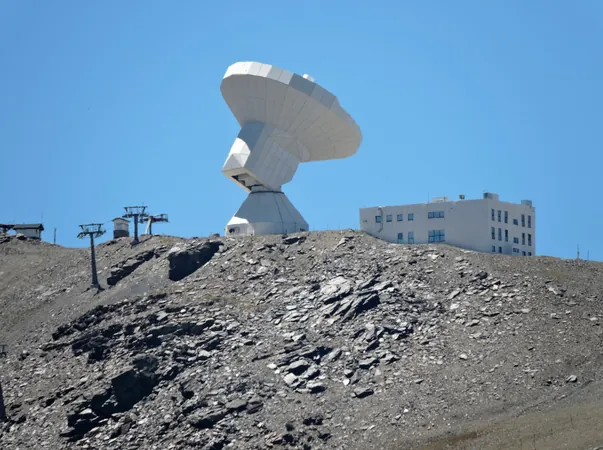
Unveiling the Cosmos: Rubin Observatory's Stunning First Images
2025-07-01
Author: Rajesh
The Vera C. Rubin Observatory has taken a monumental leap forward by releasing its first breathtaking images of the universe, setting the stage for groundbreaking observations aimed at unraveling the cosmos' enigmas.
A Giant Leap in Astronomical Exploration
Perched atop Cerro Pachón in Chile, this cutting-edge facility is the fruit of collaboration between the U.S. National Science Foundation (NSF) and the Department of Energy (DOE). It promises to reshape our comprehension of the universe on an unprecedented scale.
Capturing Cosmic Wonders
In just a mere ten hours of initial testing, the observatory has already glimpsed millions of stars and galaxies as well as thousands of asteroids, showcasing its incredible observational prowess.
Next-Gen Observational Power
Housing the world’s largest digital camera with an 8.4-meter telescope, the Rubin Observatory is truly a marvel of modern technology. Its sophisticated data processing system is geared to handle an enormous influx of astronomical data, revolutionizing how we explore the night sky.
The Legacy Survey of Space and Time (LSST)
Slated to kick off full scientific operations in 2025, the observatory's flagship initiative, the Legacy Survey of Space and Time, aims to scan the entire visible Southern Hemisphere sky every few nights over a decade. This ambitious project will create a dynamic, high-resolution time-lapse of the sky that promises to unveil mysteries never seen before.
Decoding Universal Mysteries
One of the Rubin Observatory’s pivotal missions is to probe the vast unknowns of cosmology, including the elusive nature of dark matter and dark energy—forces that make up around 95% of the universe yet remain shrouded in mystery. Its detailed observations are set to refine scientific models regarding galaxy formation, cosmic expansion, and the potential existence of previously undiscovered phenomena.
Asteroids and Planetary Defense
Moreover, the observatory is poised to revolutionize our grasp on the solar system. Its nightly scans will uncover millions of asteroids, comets, and even interstellar objects, many of which have never been documented before. This exceptional capacity positions the Rubin Observatory as the ultimate tool for solar system discovery, with crucial implications for planetary defense, potentially unearthing space threats to Earth or the moon.
A Data Revolution
The observatory’s data output is projected to eclipse the cumulative results of all previous optical observatories in just its inaugural year. Over its ten-year mission, it promises to produce a treasure trove of information.
A Global Scientific Community
With its findings set to be publicly accessible, the Rubin Observatory will foster collaboration among professional scientists, citizen scientists, and educators across the globe.
Honoring a Pioneering Astronomer
Named after the illustrious astronomer Vera C. Rubin, whose groundbreaking work provided compelling evidence for dark matter, this observatory is on the verge of ushering in a thrilling new era of astronomical discovery.



 Brasil (PT)
Brasil (PT)
 Canada (EN)
Canada (EN)
 Chile (ES)
Chile (ES)
 Česko (CS)
Česko (CS)
 대한민국 (KO)
대한민국 (KO)
 España (ES)
España (ES)
 France (FR)
France (FR)
 Hong Kong (EN)
Hong Kong (EN)
 Italia (IT)
Italia (IT)
 日本 (JA)
日本 (JA)
 Magyarország (HU)
Magyarország (HU)
 Norge (NO)
Norge (NO)
 Polska (PL)
Polska (PL)
 Schweiz (DE)
Schweiz (DE)
 Singapore (EN)
Singapore (EN)
 Sverige (SV)
Sverige (SV)
 Suomi (FI)
Suomi (FI)
 Türkiye (TR)
Türkiye (TR)
 الإمارات العربية المتحدة (AR)
الإمارات العربية المتحدة (AR)